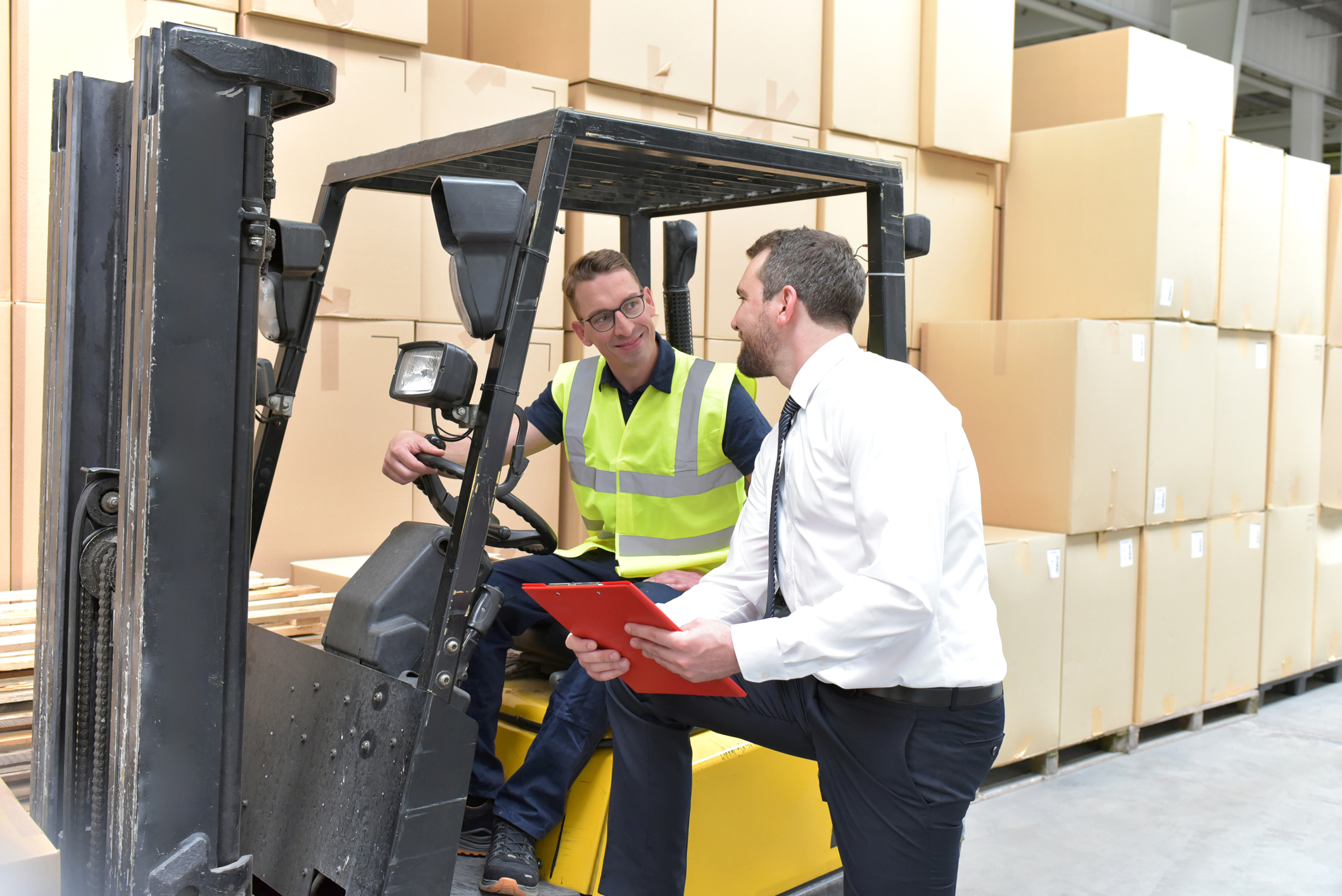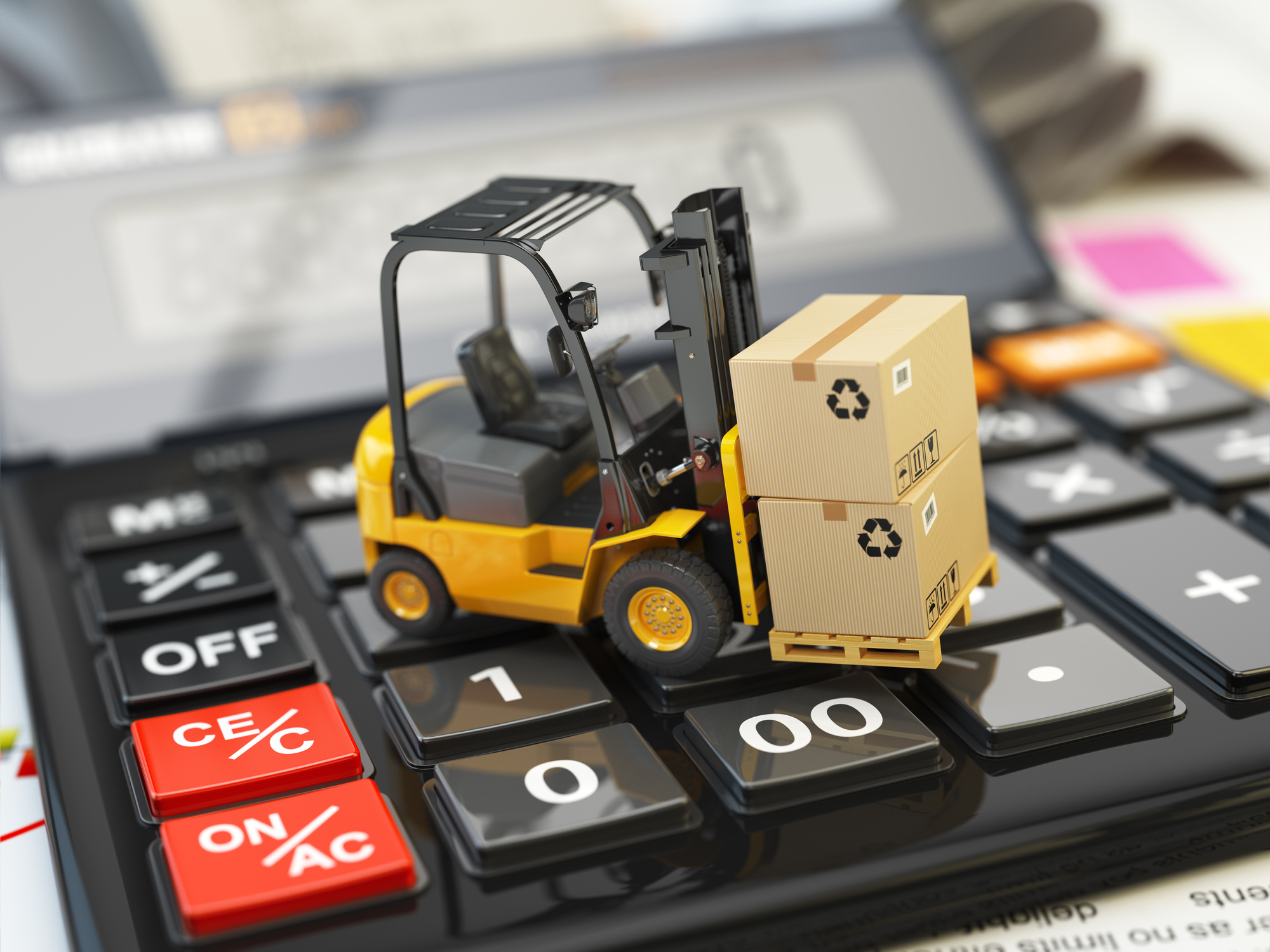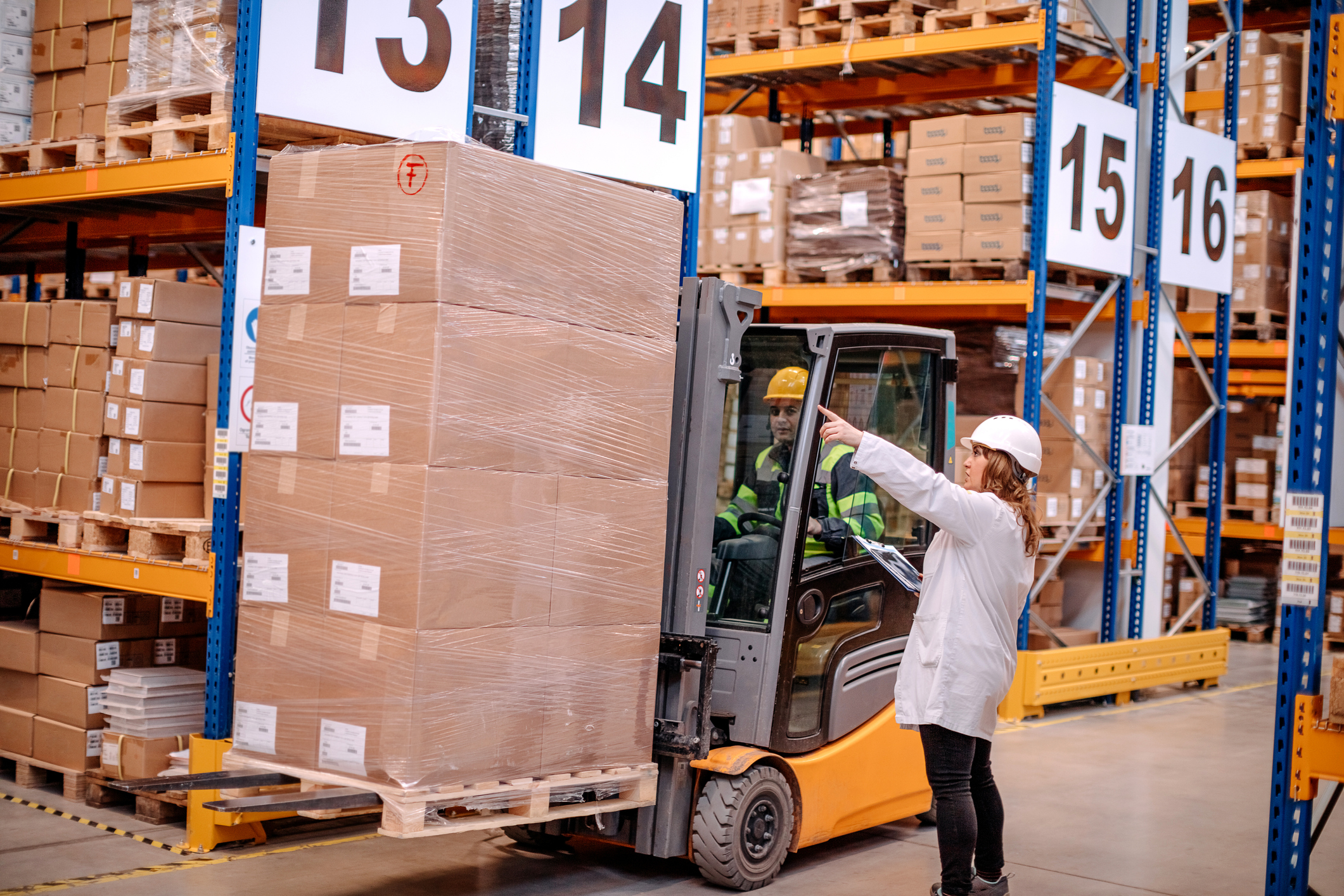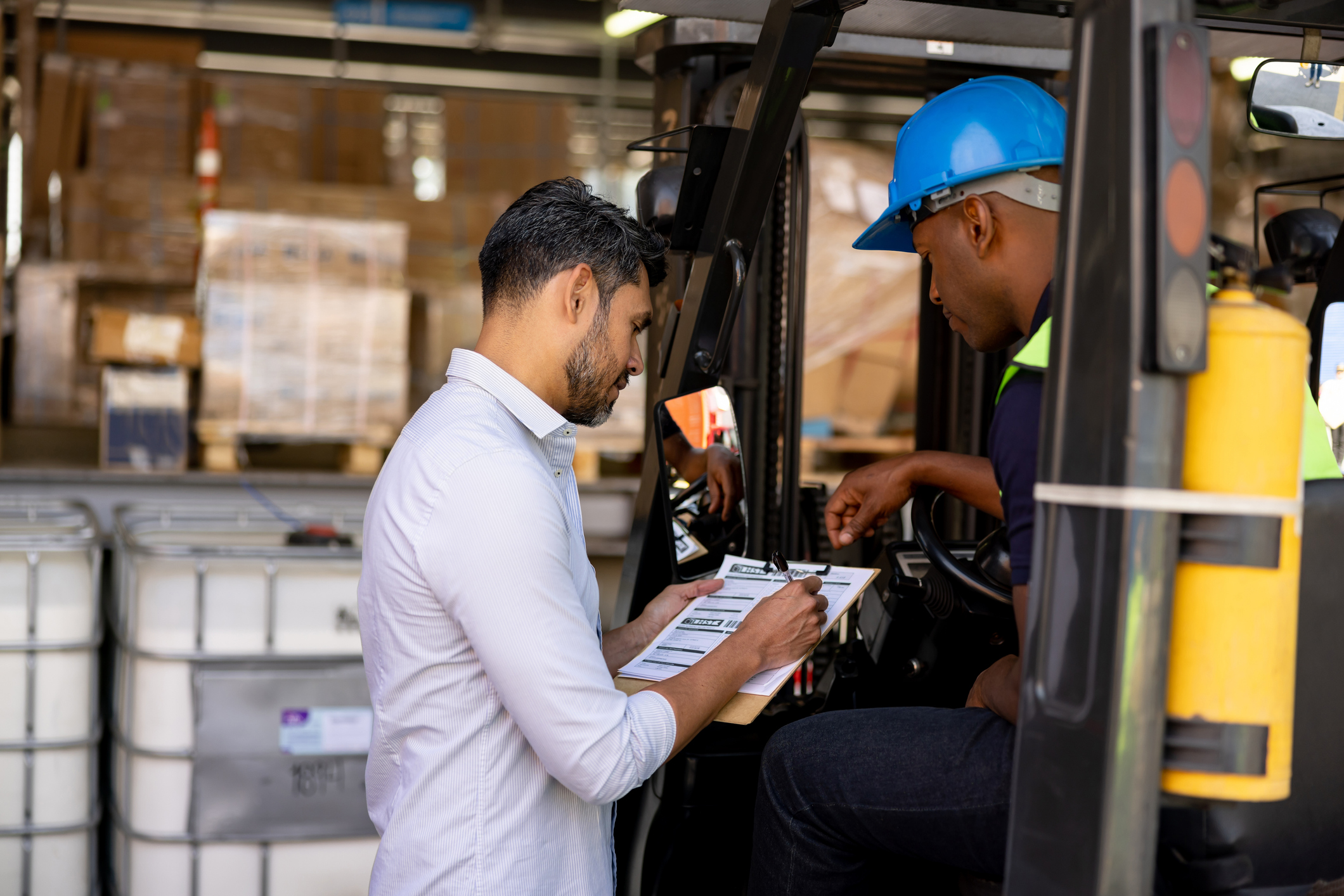Leasing a forklift, rather than purchasing it outright, can offer your business cost savings and increased flexibility. In this blog post, you’ll learn how leasing allows for improved material handling operations tailored to your organization's unique needs while saving money.
Key Takeaways
- Explore forklift lease agreements and understand terms to maximize value.
- Structure monthly payments strategically for financial stability.
- Consider the operating environment, duration & tax benefits when choosing the right lease type.
Exploring Forklift Lease Agreements

Lease agreements are essential for achieving cost-effective material handling solutions. The agreement's duration, lease type, and payments should all be considered to manage equipment needs while maintaining cash flow effectively. Usually, a forklift will come with an average monthly fee of $20 per thousand dollars financed, but returning customers can enjoy discounted rates or waived overtime fees.
With suitable leases firmly established, maximizing the utility potential that comes from using material handling items efficiently and productively is possible, thus improving operational proficiency even further.
Understanding Lease Terms

Forklift leases are longer agreements, ranging from 36 to 60 months, depending on the required usage. If your business requires consistent use for over 3,000 hours per year, then a lease period of 36 months is suggested, while if you plan to utilize it more than 1,500 hours annually, you should look into 48-60 month arrangements. Capital and one-pay leases tend to be popular options, too. With capital being able to purchase at the conclusion for a nominal fee (usually $1), whereas one pay only needs an upfront payment covering the entirety, it may have restrictions on the number of operating hours allowed throughout the term.
Structuring Monthly Payments
When it comes to structuring monthly payments on a forklift lease, several elements must be taken into account, such as the length of the agreement and any associated costs or charges. Typically, committing to longer-term leases can help lower your monthly payments, allowing businesses to maintain their cash flow more effectively - around $20 per month is charged for every $ 1,000 financed in general terms. For best results with your material handling requirements and financial stability, it’s important to plan how these regular installments should fit into your budget accordingly. Doing so will enable better control over finances while guaranteeing steady progress with operations.
Choosing the Right Lease Type
When it comes to leasing a lift truck, several different lease types are available with their respective advantages and disadvantages. Consider capital leases for low-priced purchases at the end of your term, operating leases with lower monthly payments and tax benefits, or flex leases, which provide flexibility in terms such as early returns or discounted costs. Depending on factors like its working environment, duration of the agreement, and financial needs also determine what kind of lease will be best suited for your business needs - whether you opt into a bundle package option or not - allowing you to maximize value through cost-efficiency initiatives over time. Examining all these details carefully can help lead to an optimal fitting lease solution that meets material handling requirements.
Working with an Equipment Leasing Specialist
Collaborating with a leasing specialist can be advantageous for those looking to lease. Leasing specialists offer:
- Varied financing possibilities and tailored rental conditions
- Working together with numerous loan providers to get the most competitive prices available
- Possibility of conclusion options such as purchase or renewal of contract.
Engaging a leasing professional has its advantages, including access to multiple lenders, which could save you commission fees (usually 1 - 5%), full maintenance plans offering dependable equipment repair solutions so that there is no interruption in production, plus expertise in securing an ideal lease agreement customized for your enterprise’s requirements.
The Financial Perks of Leasing Lift Trucks

Leasing lift trucks can be a great financial solution for businesses, providing them with several advantages, such as cash flow preservation and tax benefits. Through leasing, companies are not required to pay any down payment or the full initial amount. Instead, only monthly payments have to be made, which can provide a cost-efficient way of acquiring many forklifts while still allocating funds toward other operations in the business.
Leases give access to modern technology models that improve efficiency and productivity while benefiting from lower operating costs due to flexible lease terms concerning rental forklifts compared to buying these materials outright for material handling needs.
Tax Advantages of Leasing
When leasing forklifts, businesses can take advantage of some significant financial benefits of tax reductions. For example, lease payments are considered an expense and may be deducted from taxes. The Section 179 Deduction enables companies to write off equipment costs up to $1,500,000 at once instead of depreciating it over a longer period. This means notable savings come with their taxation bill.
Then, for those looking for ways to cut down on expenses yet maintain operational success with appropriate tools and machinery, leasing appears to be a viable option, offering sound economic incentives through advantages such as decreased taxes.
Preserving Cash Flow
Leasing forklifts can be advantageous for cash flow management, as the lower upfront costs and monthly payment plan provide flexibility with expenses. Businesses won’t need to worry about a large downpayment or full-price charge at once, allowing them to use their resources elsewhere while obtaining necessary equipment.
Structuring these payments accordingly offers an efficient way of monitoring financial obligations, thereby fostering opportunities for growth without straining budgets too much over time. Leasing enables organizations to maintain practicality in allocating funds regularly each month.
Why Your Equipment Dealer May Not Be the Best Lease Vendor
When acquiring a lease agreement, looking for other financial institutions is important to find the best option that meets your needs. Equipment dealers usually have restricted leasing options and terms of tenure as they possess ownership of the machinery. Specialist leasers focus on only providing leases. Their capabilities come with varied financing possibilities accompanied by adjustable hire agreements, working with several creditors to guarantee attractive rates and terms that can lead to significant savings.
By exploring different vendors when looking into rentals, you can look for one suitable for your business, resulting in reduced costs while ensuring superior performance from material handling processes.
Enhancing Operational Efficiencies with Leased Forklifts

Leasing forklifts offers more than financial savings, which can also result in operational improvements. With the most advanced equipment and technology available, businesses can significantly increase their material handling efficiency. Leasing allows them to adjust and update their fleet at any time to function optimally for whatever operations they may need.
Renting out this machinery also helps cut down on maintenance costs while keeping the machines running effectively - ensuring your forklift system will consistently run without interruption or loss of performance.
Fleet Management and Replacement Cycles
Leasing forklifts provides an effective way to manage fleet replacement cycles and gain access to the latest materials handling equipment. It’s a cost-saving strategy that ensures you have no more than is required for the job, keeping unnecessary expenses down while maximizing safety compliance standards. Replacements are typically made every 3-5 years, not to exceed the economic life expectancy of each piece of machinery. They allow quick upgrades when new models become available to keep your operations running smoothly with modern technology at their disposal.
Maintenance and Service Costs
Leasing forklifts can provide numerous advantages, such as reducing maintenance and service costs while maximizing equipment availability and operator downtime. With the latest technologies included in leased lifts, you are likely to experience a decrease in demand for maintenance - something that leasing companies actively seek to ensure cost-efficiency on behalf of their customers.
When considering a long-term commitment to purchasing lift trucks versus simply opting for lease agreements, this becomes an obvious advantage, allowing reallocation of financial resources towards other areas within the organization, thereby preserving available funds. With leasing also comes well-maintained fleets, granting business operators regular access without fear of breakdowns or technical issues affecting performance levels adversely.
Customizing Your Forklift Lease
If you want the most effective and flexible forklift leasing experience, tailoring your agreement is great. By adapting fleet size, equipment options, and bespoke features according to what exactly you need to operate efficiently, customizing your lease will ensure that it caters to all your material handling needs.
The ability to modify each unique feature on the item ensures that no aspect of performance or cost-efficiency is overlooked. Ultimately giving businesses greater control over their operational objectives while providing value through equipment specification adjustments within their leases.
Adjusting Fleet Size and Equipment Mix

Fleet size and equipment mix adjustments are essential for successful forklift leasing operations. Important aspects that should be considered include operating hours, production location changes, and tailored needs in a variable manufacturing environment. Strategies such as regular maintenance, operator training, or flexible contracts allow businesses to adapt their fleet according to changing requirements, promoting effective use of material handling capabilities without disrupting cost efficiency. It is possible for companies to continually adjust their fleets so they match specific business demands, allowing them to maintain a functional operation over time.
Addressing Unique Equipment Specifications
When leasing a forklift, negotiating the terms of your lease agreement can help customize it for your unique equipment specifications. Doing so guarantees that it meets all operational needs and optimizes material handling functions. Typical customization includes alterations such as lifting capacity changes, adding attachments, or adjusting service maintenance parameters like fuel options and control systems related to size and application requirements.
The key is consulting with lessors beforehand to make any necessary adjustments before signing off on the final lease contract. This way, you maximize productivity while ensuring accuracy at every step.
Avoiding the Pitfalls of Forklift Leasing
When renting forklifts, one should be mindful of possible surprises or problems, like undisclosed fees and other options at the end of the lease period. To guarantee a successful leasing experience, it is important to completely read over your lease agreement and familiarize yourself with all costs associated, such as maintenance expenses, before signing. Be transparent about pricing information, too, so you don’t encounter any surprises later in the process. Ensure everyone involved is crystal clear when discussing duration timescales for rental periods, too!
Identifying Hidden Fees

When leasing a forklift, hidden fees in the agreement can add up and make for an expensive venture. It is essential to review the lease contract carefully and inquire about any additional costs upfront so that you don’t incur extra expenditure when entering such an arrangement. Knowing what kind of expenses could be included in your agreement—documentation charges, application costs, or delivery fees—can help ensure minimal excess cost accumulation over time. By being mindful while going through all stages of signing a lease contract, from reading everything thoroughly to asking questions on Payments before committing yourself too deeply, one can have peace of mind knowing they are getting not only good quality but also value out their rented goods endeavor without accumulating unnecessary amounts in additionals!
Managing End-of-Lease Options
At the termination of forklift leases, it is essential to thoroughly review your lease agreement and evaluate all feasible options, such as purchasing the equipment at fair market value, keeping a month-to-month rental structure, or sending back the item. Considering residual charges due upon return of the property, extra fees if late payment occurs, or special rates for returning customers’ overtime expenses can help you decide on what best fits your business needs while avoiding complications that could occur without proper preplanning.
Summary
Forklift leasing offers a range of advantages, from cost savings to operational enhancements and adaptability. By grasping lease terms, organizing monthly payments, selecting the appropriate type of lease, and working with an experienced leaser specialist, you can streamline your material handling operations for greater business success. Be sure to keep watch out for possible risks while customizing your agreement to guarantee that you get the best return on investment from your forklift fleet.
Frequently Asked Questions
What are the benefits of leasing a forklift?
Leasing a forklift is beneficial for cost savings, as one does not need to pay large amounts of money upfront. The payments associated with leasing tend to be lower than those when taking out loans. It takes away all concerns about having to resell an outdated machine afterward.
What is a capital lease on a forklift?
The capital lease on a forklift is an agreement where the lessee gains ownership of it, with both advantages and disadvantages that accompany that. This longer-term rental arrangement allows them to use the machine without buying it outright.
Is 7,000 hours a lot for a forklift?
A forklift that has gone through approximately 7,000 hours of use still may be considered in good condition and have between a quarter to half its life span left. Nevertheless, opting for one that is not as used could offer great savings.
What are the main components of a forklift lease agreement?
A lease agreement for a forklift typically outlines the conditions of monthly payments, what types of leases are available, and support from leasing specialists.
How can I structure my monthly payments to suit my business needs and budget?
Strategically plan your lease payments to align with your business needs and budget to manage cash flow effectively.
